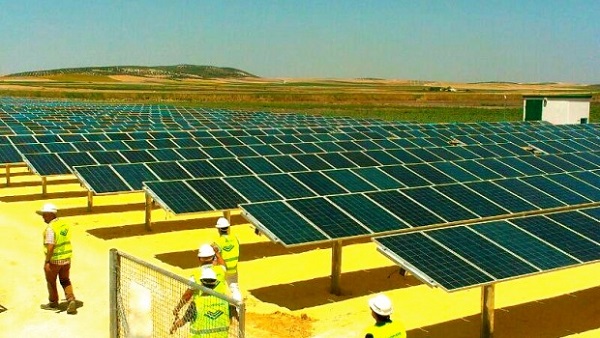Spain’s recent history with solar power has been nothing if not tumultuous. Generous subsidies created a booming market in 2008, but the economic crisis brought a quick end to that. And now the country is pulling the rug out from under thousands of solar producers, many of them small, whose financing depended on the promise of those generous subsidies.
So is it a completely hopeless mess? Greenpeace says it might not be. The organization is pointing to a new utility-scale plant in Seville that is going into service “getting the same reward as any conventional power plant,” with “no subsidy, no feed-in tariff.”

Jose Luis Garcia, who focuses on climate and energy for Greenpeace Spain, said in a recent piece that the economics of solar power have indeed shifted – in a good way.
“[S]olar energy is running through its learning curve much quicker than anyone could have anticipated,” Garcia wrote. “And subsequently, the need for new plants to get economic support has become lower and lower. Today a solar panel costs some 80 percent less than just five years ago to yield the same power. And costs are projected to lower by another 50 percent by 2020.”
According to data from Red Electrica de Espana [PDF], there was 4,681 MW of solar PV capacity in Spain as of the end of 2013, and it generated 8,937 gigawatt-hours of electricity, or 3.2 percent of total electrical demand. Another 2,300 MW of solar thermal provided 4,554 GWh, or 1.8 percent of the total demand. Wind made up 20.8 percent of total demand, so a boost in solar PV would help Spain balance its renewable portfolio.
The Seville plant is big but not huge – 2.5 megawatts. But the company behind it, Enerpro, has a roster of 1-MW projects lined up in the near term that will total another 12 MW , along with more ambitious projects planned for further down the road.
Meanwhile, Greenpeace says the Spanish grid operator is sitting on 40,000 MW of planned PV plants that “are waiting or procedural green light to access the grid, while their investors are valuing the fact that electricity from the new PV plants can now compete in the market without any support system to make the investment profitable.”
Whether that will come to pass or not in the topsy-turvy Spanish solar market, well, we’ll be watching closely to see. If it does, it will be a strong, positive signal for solar’s long-term future, in Spain and elsewhere in Europe.